Superfund Sites in Reuse in Georgia
If you are having trouble viewing the map in your browser, click the 'View larger map' link below
Camilla Wood Preserving Company
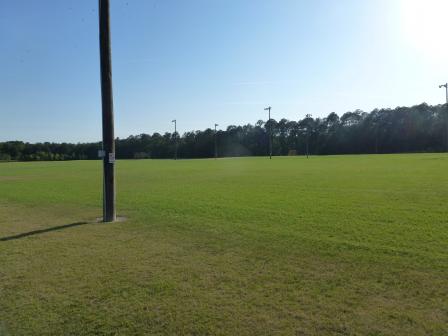 Camilla Wood Preserving CompanyThe 54-acre Camilla Wood Preserving Superfund site is located in Camilla, Georgia. From 1947 until 1991, wood-preserving activities at the site contaminated soil and groundwater. EPA performed investigations and short-term cleanups at the site between 1991 and 2007. Cleanup activities included treatment and disposal of wastewater, construction of a fence around the site, removal of contaminated soil from the western part of the site, and removal of contaminated equipment and debris. EPA added the site to the Superfund program’s National Priorities List (NPL) in 1998. Additional cleanup activities are underway to address contamination on the eastern part of the site. The City of Camilla used Superfund Redevelopment Initiative Pilot funding to commission a reuse planning process and to share the results with EPA. The City worked with a community-based Land Use Committee and a consultant team to develop a reuse plan. The Committee determined that the site would be an ideal location for a soccer complex. It also identified other recreational needs of the local community. Today, several soccer fields and an RV park provide the public with new recreational opportunities at the Mitchell County Recreation Complex. Site reuses also include an aerobics classroom, office space for Mitchell County’s Parks & Recreation Department, a concession stand and parking areas. In 2012, EPA awarded the City of Camilla and Mitchell County the Region 4 Excellence in Site Reuse award for outstanding efforts to redevelop a Superfund site. The City and County have drawn up initial plans for more recreational uses at the site. Future uses include basketball courts, baseball fields, batting cages, a playground, picnic tables and a volleyball court. Walking and biking trails could also be extended across the entire site and connect to downtown Camilla after cleanup is complete.
Camilla Wood Preserving CompanyThe 54-acre Camilla Wood Preserving Superfund site is located in Camilla, Georgia. From 1947 until 1991, wood-preserving activities at the site contaminated soil and groundwater. EPA performed investigations and short-term cleanups at the site between 1991 and 2007. Cleanup activities included treatment and disposal of wastewater, construction of a fence around the site, removal of contaminated soil from the western part of the site, and removal of contaminated equipment and debris. EPA added the site to the Superfund program’s National Priorities List (NPL) in 1998. Additional cleanup activities are underway to address contamination on the eastern part of the site. The City of Camilla used Superfund Redevelopment Initiative Pilot funding to commission a reuse planning process and to share the results with EPA. The City worked with a community-based Land Use Committee and a consultant team to develop a reuse plan. The Committee determined that the site would be an ideal location for a soccer complex. It also identified other recreational needs of the local community. Today, several soccer fields and an RV park provide the public with new recreational opportunities at the Mitchell County Recreation Complex. Site reuses also include an aerobics classroom, office space for Mitchell County’s Parks & Recreation Department, a concession stand and parking areas. In 2012, EPA awarded the City of Camilla and Mitchell County the Region 4 Excellence in Site Reuse award for outstanding efforts to redevelop a Superfund site. The City and County have drawn up initial plans for more recreational uses at the site. Future uses include basketball courts, baseball fields, batting cages, a playground, picnic tables and a volleyball court. Walking and biking trails could also be extended across the entire site and connect to downtown Camilla after cleanup is complete.
For more information:
- Redevelopment of the Camilla Wood Preserving Superfund Site (PDF)(1 pg, 770 K, About PDF)
- Camilla Wood Preserving Company, Camilla, GA - Reuse Framework (PDF) (68 pp, 8.1 MB)
- Growing Toward Tomorrow, Together: Integrating Remedy and Reuse - The Camilla Wood Preserving Superfund Site in Camilla, Georgia (PDF) (12 pp, 6.8 MB)
- Superfund Site Profile Page
Cedartown Industries, Inc.
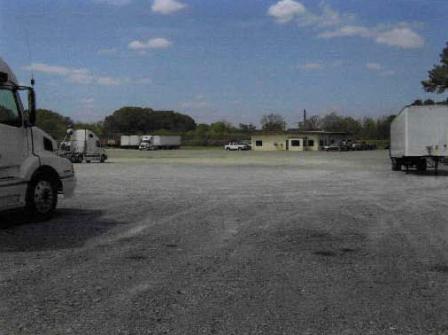 Cedartown Industries, Inc.The 7-acre Cedartown Industries, Inc. Superfund site is located in Cedartown, Georgia. Industrial activities took place at the site since 1874. Operators performed iron-ore smelting, secondary lead smelting, and pump and plow blade manufacturing. In 1986, the Georgia Environmental Protection Division (EPD) conducted a site inspection. The inspection found that site activities contaminated site soil, sediment and groundwater with heavy metals. In 1990, EPA placed the site on the Superfund program’s National Priorities List (NPL). Later that year, cleanup workers removed and disposed of slag, contaminated debris, soil, wastewater and sediment. In 1996 and 1997, the site’s potentially responsible parties (PRPs) performed additional cleanup activities. Cleanup included the removal and treatment of contaminated soil, long-term groundwater monitoring, as well as land and groundwater use restrictions. After completing cleanup, EPA removed the site from the NPL in 2006. EPA worked with the PRPs during the cleanup and enabled the continued operation of an on-site business throughout cleanup activities. The current owners purchased the site property in August 1984. They currently lease the property to H&W Transfer Company for truck parking and maintenance.
Cedartown Industries, Inc.The 7-acre Cedartown Industries, Inc. Superfund site is located in Cedartown, Georgia. Industrial activities took place at the site since 1874. Operators performed iron-ore smelting, secondary lead smelting, and pump and plow blade manufacturing. In 1986, the Georgia Environmental Protection Division (EPD) conducted a site inspection. The inspection found that site activities contaminated site soil, sediment and groundwater with heavy metals. In 1990, EPA placed the site on the Superfund program’s National Priorities List (NPL). Later that year, cleanup workers removed and disposed of slag, contaminated debris, soil, wastewater and sediment. In 1996 and 1997, the site’s potentially responsible parties (PRPs) performed additional cleanup activities. Cleanup included the removal and treatment of contaminated soil, long-term groundwater monitoring, as well as land and groundwater use restrictions. After completing cleanup, EPA removed the site from the NPL in 2006. EPA worked with the PRPs during the cleanup and enabled the continued operation of an on-site business throughout cleanup activities. The current owners purchased the site property in August 1984. They currently lease the property to H&W Transfer Company for truck parking and maintenance.
For more information:
Firestone Tire & Rubber Co. (Albany Plant)
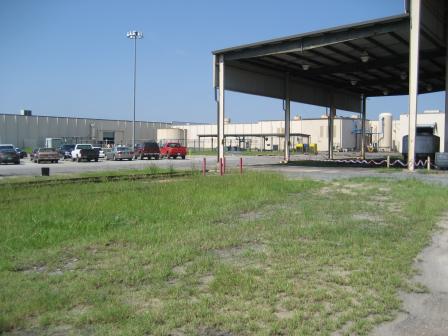 Firestone Tire & Rubber Co. (Albany Plant)The 329-acre Firestone Tire & Rubber Co. (Albany Plant) Superfund site is located outside of Albany, Georgia. Constructed in 1967, the facility included a 1.84 million square foot building with a courtyard area for material handling and shipping. Firestone Tire and Rubber Company manufactured tires on site from 1968 until the firm ended operations in 1986. While preparing to end operations in 1986, Firestone Tire and Rubber Company performed voluntary site assessment and cleanup activities. Cooper Tire purchased the facility and operated it as a tire manufacturing facility until 2009. A 1988 site inspection found that site activities contaminated ground water with volatile organic compounds (VOCs), polychlorinated biphenyls (PCBs) and metals. EPA placed the site on the National Priorities List (NPL) in 1989 and selected a final cleanup plan in a 1993 Record of Decision (ROD). Cleanup activities included the excavation of contaminated soil, extraction and treatment of contaminated ground water, ground water monitoring and the implementation of well-construction and water use restrictions. EPA documented the completion of remedy construction in a 1998 preliminary closeout report. The successful cleanup allowed for the continued use of the site throughout the cleanup process. Hilco Real Estate purchased the property in late 2011 and currently leases part of the building back to Cooper Tire for use as a distribution center. Hilco Real Estate demolished the rest of the facility in 2012 to make the land more marketable.
Firestone Tire & Rubber Co. (Albany Plant)The 329-acre Firestone Tire & Rubber Co. (Albany Plant) Superfund site is located outside of Albany, Georgia. Constructed in 1967, the facility included a 1.84 million square foot building with a courtyard area for material handling and shipping. Firestone Tire and Rubber Company manufactured tires on site from 1968 until the firm ended operations in 1986. While preparing to end operations in 1986, Firestone Tire and Rubber Company performed voluntary site assessment and cleanup activities. Cooper Tire purchased the facility and operated it as a tire manufacturing facility until 2009. A 1988 site inspection found that site activities contaminated ground water with volatile organic compounds (VOCs), polychlorinated biphenyls (PCBs) and metals. EPA placed the site on the National Priorities List (NPL) in 1989 and selected a final cleanup plan in a 1993 Record of Decision (ROD). Cleanup activities included the excavation of contaminated soil, extraction and treatment of contaminated ground water, ground water monitoring and the implementation of well-construction and water use restrictions. EPA documented the completion of remedy construction in a 1998 preliminary closeout report. The successful cleanup allowed for the continued use of the site throughout the cleanup process. Hilco Real Estate purchased the property in late 2011 and currently leases part of the building back to Cooper Tire for use as a distribution center. Hilco Real Estate demolished the rest of the facility in 2012 to make the land more marketable.
For more information:
Hercules 009 Landfill
 Hercules 009 LandfillThe 16.5-acre Hercules 009 Landfill Superfund site is located in Brunswick, Georgia. From 1948 through 1980, Hercules, Inc. used 7 acres at the northern end of the site, known as the 009 Landfill, to dispose of waste. In March 1980, the Georgia Environmental Protection Division (EPD) collected samples that revealed contamination on site. As a result, EPD canceled Hercules, Inc.’s permit to operate the landfill. In 1982, site operations ceased. EPA added the site to the Superfund program’s National Priorities List (NPL) in 1984. In 1991 and 1993, EPA issued cleanup plans that included stabilizing on-site soil and sludge; installing a cap over the landfill; monitoring groundwater, surface water and sediment in the on-site pond and the drainage ditch next to the site; and long-term landfill cap maintenance. Taking advantage of the location of the landfill cap, a car dealership directly north of the site worked with the potentially responsible party to put the site back into reuse without harming site cleanup efforts. The car dealership fenced and paved the top of the capped landfill to create a parking lot to display its cars. This use has helped to further preserve the integrity of the capped landfill beneath. Over the past few years, Hercules began working with the Wildlife Habitat Council to obtain a Conservation Certification for the southern on-site pond area. The company has installed wildlife cameras, basking logs and cover boards to attract insects and reptiles. Wildlife cameras have documented raccoons, foxes, squirrels and large birds at the site.
Hercules 009 LandfillThe 16.5-acre Hercules 009 Landfill Superfund site is located in Brunswick, Georgia. From 1948 through 1980, Hercules, Inc. used 7 acres at the northern end of the site, known as the 009 Landfill, to dispose of waste. In March 1980, the Georgia Environmental Protection Division (EPD) collected samples that revealed contamination on site. As a result, EPD canceled Hercules, Inc.’s permit to operate the landfill. In 1982, site operations ceased. EPA added the site to the Superfund program’s National Priorities List (NPL) in 1984. In 1991 and 1993, EPA issued cleanup plans that included stabilizing on-site soil and sludge; installing a cap over the landfill; monitoring groundwater, surface water and sediment in the on-site pond and the drainage ditch next to the site; and long-term landfill cap maintenance. Taking advantage of the location of the landfill cap, a car dealership directly north of the site worked with the potentially responsible party to put the site back into reuse without harming site cleanup efforts. The car dealership fenced and paved the top of the capped landfill to create a parking lot to display its cars. This use has helped to further preserve the integrity of the capped landfill beneath. Over the past few years, Hercules began working with the Wildlife Habitat Council to obtain a Conservation Certification for the southern on-site pond area. The company has installed wildlife cameras, basking logs and cover boards to attract insects and reptiles. Wildlife cameras have documented raccoons, foxes, squirrels and large birds at the site.
For more information:
- Redevelopment of the Hercules 009 Landfill Site (PDF)(1 pg, 976 K, About PDF)
- Superfund Site Profile Page
LCP Chemicals Georgia
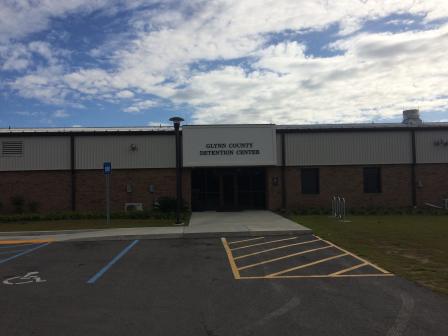 LCP Chemicals GeorgiaThe 813-acre LCP Chemicals Georgia Superfund site is located in Brunswick, Georgia. The site consists mainly of tidal marsh. A variety of industrial plants operated at the site between the early 1920s and 1994. Manufacturing activities, including an oil refinery, a paint manufacturing company, a power plant and a chlor-alkali plant, caused contamination at the site. EPA added the site to the Superfund program’s National Priorities List (NPL) in June 1996. Cleanup is ongoing. EPA recently endorsed a tract of site property as ready for reuse, and Glynn County seized this opportunity. The County has decided to use a portion of the LCP Chemicals site for a new county detention center. The Honeywell Corp., the current site owners, and the County finalized a $475,000 agreement for use of a 35-acre tract of property to house the new 610-bed jailhouse. The County began clearing the property for construction of the $27.4 million facility in 2012. The facility opened in late September 2014.
LCP Chemicals GeorgiaThe 813-acre LCP Chemicals Georgia Superfund site is located in Brunswick, Georgia. The site consists mainly of tidal marsh. A variety of industrial plants operated at the site between the early 1920s and 1994. Manufacturing activities, including an oil refinery, a paint manufacturing company, a power plant and a chlor-alkali plant, caused contamination at the site. EPA added the site to the Superfund program’s National Priorities List (NPL) in June 1996. Cleanup is ongoing. EPA recently endorsed a tract of site property as ready for reuse, and Glynn County seized this opportunity. The County has decided to use a portion of the LCP Chemicals site for a new county detention center. The Honeywell Corp., the current site owners, and the County finalized a $475,000 agreement for use of a 35-acre tract of property to house the new 610-bed jailhouse. The County began clearing the property for construction of the $27.4 million facility in 2012. The facility opened in late September 2014.
For more information:
- LCP Chemicals Operable Unit 3 Quadrant 1 Ready for Reuse Determination (2012) (PDF) (15 pp, 3.3 MB, About PDF)
- Superfund Site Profile Page
Macon Naval Ordnance Plant
The 433-acre Macon Naval Ordnance Plant Superfund site is located in Macon, Georgia. From 1941 until 1965, the U.S. Navy manufactured ordnance and conducted metal plating on site. From 1965 until 1981, privately-owned companies continued ordnance manufacturing, metal plating and made seat belts at the site. Improper handling, storage and disposal of hazardous substances from manufacturing practices resulted in site-wide contamination. In the 1990s, U.S. Army Corps of Engineers (USACE) discovered contamination of ground water, surface water, soil and sediment. The USACE ceased operations and EPA continues to look for additional sources of contamination and responsible parties. EPA placed the site on the Superfund program’s National Priorities List (NPL) in May 2013. Macon-Bibb County Industrial Authority has operated Allied Industrial Park on site since 1980 and continues operations today. Businesses in the Allied Industrial Park manufacture a wide range of industrial and consumer goods, including pickles and non-woven fabrics.
For more information:
Marzone Inc./Chevron Chemical Co.
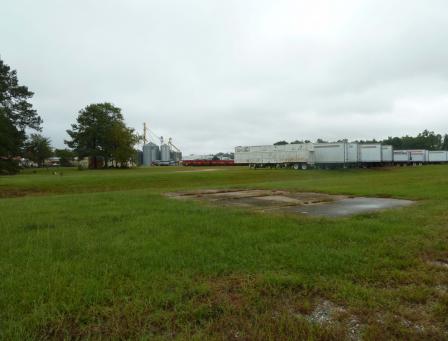 Marzone Inc./Chevron Chemical Co.The Marzone Inc./Chevron Chemical Co. Superfund site is located outside Tifton, Georgia. Chevron Chemical Company owned and operated a pesticide and herbicide formulation plant on a portion of the site, referred to by EPA as operable unit (OU) 1, from 1950 to 1970. Several other companies, including Marzone Chemical Company, owned and operated the plant from 1970 until 1983. From the late 1960s until 1992, different companies, including Golden Seed Inc., operated a formulation and packaging plant for pesticides and fertilizers on another portion of the site, referred to as OU-2. Plant operations at both OUs resulted in contamination of the soil, sediment and groundwater. In 1989, EPA added the site to the Superfund program’s National Priorities List (NPL). Cleanup activities performed by the site’s potentially responsible party (PRP) at OU-1 included the removal of contaminated soil and sediment and the use of a funnel-and-gate system to channel groundwater through a system of trenches for treatment. Cleanup activities completed by EPA at OU-2 include the placement of groundwater use restrictions, monitored natural attenuation to address contaminated groundwater and the removal of contaminated soil and sediment. EPA cleanup also included the decontamination of buildings and equipment. Groundwater cleanup is ongoing. Light industry, including equipment storage and metal recycling operations, currently operate in warehouses at OU-1. The Banner Grain & Peanut Company continued operations throughout the cleanup at OU-2. The business continues to operate a peanut processing and storage facility at the site.
Marzone Inc./Chevron Chemical Co.The Marzone Inc./Chevron Chemical Co. Superfund site is located outside Tifton, Georgia. Chevron Chemical Company owned and operated a pesticide and herbicide formulation plant on a portion of the site, referred to by EPA as operable unit (OU) 1, from 1950 to 1970. Several other companies, including Marzone Chemical Company, owned and operated the plant from 1970 until 1983. From the late 1960s until 1992, different companies, including Golden Seed Inc., operated a formulation and packaging plant for pesticides and fertilizers on another portion of the site, referred to as OU-2. Plant operations at both OUs resulted in contamination of the soil, sediment and groundwater. In 1989, EPA added the site to the Superfund program’s National Priorities List (NPL). Cleanup activities performed by the site’s potentially responsible party (PRP) at OU-1 included the removal of contaminated soil and sediment and the use of a funnel-and-gate system to channel groundwater through a system of trenches for treatment. Cleanup activities completed by EPA at OU-2 include the placement of groundwater use restrictions, monitored natural attenuation to address contaminated groundwater and the removal of contaminated soil and sediment. EPA cleanup also included the decontamination of buildings and equipment. Groundwater cleanup is ongoing. Light industry, including equipment storage and metal recycling operations, currently operate in warehouses at OU-1. The Banner Grain & Peanut Company continued operations throughout the cleanup at OU-2. The business continues to operate a peanut processing and storage facility at the site.
For more information:
Monsanto Corp. (Augusta Plant)
The 75-acre site Monsanto Corporation Superfund site is located in an industrial park in Augusta, Richmond County, Georgia. Chemical plant operations involving the production of phosphoric acid began at the site in 1962. Over the years, the Monsanto Corporation dumped wastes and sludge in two small landfills on the property. Contamination from these landfills eventually spread to the groundwater. In 1984, EPA added the site to the Superfund program’s National Priorities List (NPL). Under the direction of EPA and the State, the Monsanto Corporation cleaned up the property, removing the contents of both landfills and transporting the waste to a licensed facility. The company also built a system to clean the contaminated groundwater. EPA removed the site from the NPL in 1989. The cleanup not only protects the health and safety of the public and the environment, but also enables the on-site facility to continue to operate, retaining jobs and income in the community. Prayon Inc., the current owner of the facility, purchased the property from Monsanto in 1999, and plans to continue phosphoric acid manufacturing operations at the site.
For more information:
Peach Orchard Road PCE Groundwater Plume Site
The 350-acre Peach Orchard Road PCE Groundwater Plume Superfund site is located in Augusta, Georgia. The site is located in an area with multiple industries, including strip malls, dry cleaners, gas stations, auto salvage yards and automotive repair shops. EPA determined that four of nine area dry cleaners contributed to contamination in groundwater. In 2005, EPA added the site to the Superfund program’s National Priorities List (NPL). Cleanup activities include treating groundwater, sampling, and removing and treating soil. The cleanup plan design allowed residential and commercial land uses at the site to continue.
For more information:
Woolfolk Chemical Works, Inc.
For years, the properties surrounding the old Woolfolk Chemical Works Superfund site in Fort Valley, Georgia, were contaminated eyesores. Today, following cleanup, these properties feature government and community spaces, including an office, a welcome center and a 15,000-square-foot public library. For more than 60 years, the Woolfolk Chemical Plant produced a variety of agricultural pesticides. Over time, many of the chemicals used daily at the plant seeped into the ground near homes and businesses and polluted the ground water. In 1990, EPA added the site to the National Priorities List (NPL). EPA worked quickly to clean up polluted soil, contaminated ground water and residences. Today, homes affected by the site’s contamination are clean and remain in use. In 2009, the site received $1.8 million in American Reinvestment and Recovery Act (ARRA) funds to support additional on-site cleanup efforts, such as soil removal and treatment, backfilling, stockpiling for off-site disposal, grading, closing and re-vegetating the property. The stimulus funds enabled EPA to redirect resources to expedite the cleanup by 6 to 12 months and the expedited cleanup allowed the City of Fort Valley to begin reuse planning and redevelopment earlier on certain sections of the site. EPA also supported the community’s efforts to develop a reuse plan for the site with a Superfund Redevelopment pilot grant. Today, Fort Valley's new library, office space and welcome center stand as a testament to the successful collaboration between EPA and the community of Fort Valley, Georgia. EPA continues to work with the local community to integrate local reuse priorities as part of the cleanup for remaining parts of the site. A bus company reuses a paved portion of the site to park buses. The City of Fort Valley also uses the property to host several local festivals, including the ComSouth Hambone Jam and an annual fall festival. These site uses generate tax revenue that the City can then invest in additional redevelopment activities.
For more information:
